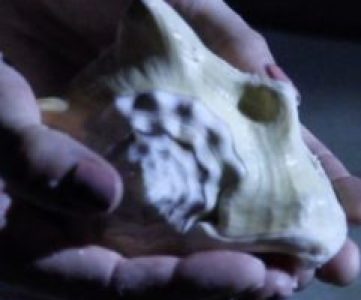TT Journal, ISSUE 5, 20th January 2023
Dear Reader
The theme of this issue was born out of a need to find a broader context for my ongoing project, which explores and records shared moments between four generations of women within my own female line. This project recently celebrated a ten-year anniversary. I felt that such a moment deserved to be marked, while also set in relation to other works and concerns. I decided to invite others to discuss, explore and celebrate their own unique family connections from their own varied perspectives.
It soon became clear that these networks of familial relationships cannot be separated from the environment in which they are formed. Hence the theme of family bonds was expanded to include questions of home: Home as a house, an architectural structure which provides a shelter, but also a psychological construct, a space inhabited by our dreams, imaginations and memories, in the Bachelardian sense. This intertwining of external, functional, tangible spaces with the internal, psychological, intangible ones, is an ongoing preoccupation of this journal, so this issue is a natural extension of this cross-disciplinary investigation.
Once again, I am delighted by the resonances between the different pieces within this issue, various thematic filaments that weave through its digital pages, elaborating on the core concerns through a myriad of lenses and viewpoints. Without wanting to pre-empty any of the contributions, what seems to have crystalised here is the understanding of the vital importance of remaining open and fluid in relation to the narratives (both personal and collective) which govern our lives and our relationships, be they with people or spaces. As one of the contributions discusses, narrating is a way of structuring experience and extracting meaning. The meaning of our own life’s narrative is never fixed, is never absolute. It is always relational: its meaning is constantly shifting as we progress through time, adjusting our perspective, calibrating expectations based on our varied encounters.
What seems essential is to keep up the effort to remain ply, fluid, open to reassessing and readjusting our narratives with each new experience, but without losing a sense of who we are. To approach people in their various designated roles, enmeshed within seemingly solid structures with a mind that does not see their roles as fixed, but allows for transformation…there is a playfulness in inviting or accepting such metamorphoses of forms and there can be a delight in observing fresh meanings emerge out of new configurations. But there is also a pain in letting go of the idea that what we perceive and desperately desire to be permanent, is in fact transient, mutable.
Perhaps that’s why the medium of film, of moving images, keeps surfacing regularly in this journal. It’s a medium which is so closely linked to memory, a form of recording and encoding of time, space and people within it, an illusion of presence so masterfully transmitted in moving pictures. Yet this medium is perhaps even more about absence than presence. Moving images are souvenirs of time gone by and for every moment captured, there are endlessly more that have escaped.
On this note I want to come back to my starting point, my four generations of women project. It is interesting to note that this work too began from an experience of absence – in this case it was the absence of men, missing for various reasons. Their absence enabled me to see more clearly what remained. The absence framed what was still present – us, four women. I picked up my camera and began to record.
It seems that absence is another important theme that has emerged in this issue, sometimes more and sometimes less explicitly. Looking up the etymology of the English word, we see that it comes from Latin absens, where ab- means ‘from, away’ and esse ‘to be’. Absence as opposite to being here, present. Absence as a reminder of ephemerality. Absence of spaces, of buildings which are no longer accessible to us. Absence of certain people. Absence of home. Absence where shared memories once were, real moments in time, now lost because of degenerative illness. But, equally, absence as a form of anticipation: A part of becoming, an empty space that awaits to be filled: an empty skyline waiting for a building to appear. Or a blank paper waiting for a drawn line to define the outlines.
This is why gathering, capturing and connecting as much as losing and missing, is an important aspect of our life’s narrative, our quest to make sense, to defy, to fill and to accept absence. Remaining playful and present while drawing the (life)line, while retracing the past’s path, while anticipating the new shapes and forms to come, while holding on and also, while letting go…
Tereza Stehlikova, 20th January 2023
Cover image: Tereza Stehlikova 2022
Cover Design: Jon Wozencroft, 2023
Thank you to Susan Hibberd for help with proof reading.
